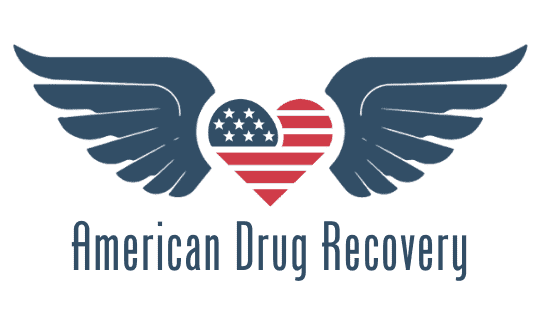Understanding Partial Hospitalization Programs
Definition and Purpose
- A partial hospitalization program (PHP) is a type of treatment that provides intensive, structured care for individuals with mental health and substance abuse issues, allowing them to return home in the evenings.
- PHPs are designed to help individuals with mental health conditions or substance abuse issues who require more support than traditional outpatient treatment but do not need 24-hour care.
Key Takeaways
| Key Point | Description |
| Definition and Purpose | PHPs offer intensive, structured mental health care during the day and allow patients to return home in the evenings. |
| Target Audience | Suitable for those needing more support than outpatient care but not requiring 24-hour residential treatment. |
| Benefits | PHPs provide intensive therapy, flexible schedules, and accessibility, helping patients maintain daily routines. |
| Daily Structure and Treatment Team | A typical day includes therapy sessions, educational programs, and progress reviews, managed by a multidisciplinary team of mental health professionals. |
| Conditions Treated and Therapies Offered | Treats various mental health issues with evidence-based and holistic therapies, including CBT, DBT, mindfulness, and art therapy. |
How PHPs Differ from Residential Treatment Programs
PHPs offer a more flexible and accessible alternative to a residential program, allowing individuals to maintain their daily routines and responsibilities.
Unlike residential treatment centers, PHPs do not provide 24-hour care, so families and individuals return home in the evenings.
Benefits of Partial Hospitalization Programs
Intensive Treatment and Support
- PHPs provide intensive treatment and support, including therapy sessions, group activities, and educational programs.
- Individuals receive comprehensive assessment and care from a multidisciplinary treatment team.
Flexibility and Accessibility
PHPs offer flexible schedules, allowing individuals to attend treatment sessions while maintaining their daily routines and responsibilities.
PHPs are often more accessible than residential treatment programs. With locations in various communities and flexible scheduling options, they provide comprehensive community mental health services, making it easier for individuals to receive the care they need without needing full-time residential care.
A Typical Day in a PHP
Morning Routine and Goal-Setting
- A typical day in PHP begins with a morning routine, including goal-setting and planning.
- Individuals participate in therapy sessions, group activities, and educational programs.
Therapy Sessions and Activities
- Therapy sessions may include individual, group, and family therapy and alternative approaches like art or music therapy.
- Activities may include educational programs, skill-building exercises, and recreational activities.
Afternoon Routine and Wrap-Up
- The afternoon routine may include additional therapy sessions, activities, or relaxation.
- The day wraps up with a review of progress, goal-setting, and planning for the next day.
Treatment Team and Staff
Roles and Responsibilities
- The treatment team includes mental health professionals, such as psychiatrists, psychologists, social workers, and counselors.
- Staff members work together to provide comprehensive care and support, including therapy sessions, medication, and case management.
Conditions Treated in Partial Hospitalization Programs
Mental Health Conditions
PHPs treat patients with a range of mental health conditions and mental illnesses, including depression, anxiety, bipolar disorder, and post-traumatic stress disorder (PTSD).
PHPs may also treat adolescents with substance abuse issues, eating disorders, and other mental health conditions.
Healing Therapies and Interventions
Evidence-Based Therapies
- PHPs use evidence-based therapies, such as cognitive-behavioral therapy (CBT) and dialectical behavior therapy (DBT).
- Therapies may include alternative approaches like art, music, or equine therapy.
Holistic and Alternative Approaches
- PHPs may incorporate holistic and alternative approaches, such as mindfulness, yoga, or meditation.
- These approaches help individuals develop coping skills, manage stress, and improve overall well-being.
Assessing Readiness for PHP
Signs and Symptoms
- Individuals may be ready for a PHP if they are experiencing symptoms of a mental health condition, such as depression, anxiety, or substance abuse.
- Signs may include changes in mood, behavior, or daily functioning.
Evaluating Individual Needs
- A comprehensive assessment is conducted to evaluate individual needs and determine the best course of treatment.
- The assessment considers factors such as mental health history, medical history, and social support.
Finding the Right Partial Hospitalization Program
Research and Evaluation
- Research and evaluate PHPs to find the right fit, considering location, treatment approaches, and staff credentials.
- Evaluate the program’s reputation, success rates, and patient reviews.
Location and Accessibility
- Consider the location and accessibility of the PHP, including transportation options and scheduling flexibility.
- Ensure the program is licensed and accredited by reputable organizations.
Alternative Treatment Options
Residential Treatment Center
Residential treatment centers, also known as residential programs, provide 24-hour care and support for individuals who require more intensive treatment.
Residential treatment facilities may be necessary for individuals with severe mental health conditions, addiction, or substance abuse issues.
Intensive Outpatient Programs and Support Groups
Intensive outpatient programs (IOPs) provide a less intensive level of addiction treatment than PHPs, with fewer hours of therapy and support. IOPs and support groups, such as 12-step programs, offer additional support and guidance for individuals in recovery, including substance abuse treatment.
Addiction Help is Within Reach
Treatment centers like American Drug Recovery use evidence-based methods and compassionate care to help those with an addiction take comfort in knowing that there are robust support systems ready to guide you through this journey.
Enrolling in a reputable recovery program represents an important step towards regaining a healthy, addiction-free life you are entitled to.
FAQ
Q1: What is a Partial Hospitalization Program (PHP)?
A: PHP is a type of mental health treatment facility that provides intensive, structured care for individuals with mental health issues, allowing them to return home in the evenings.
Q2: Who can benefit from PHP?
A: Individuals with mental health conditions, mental illness, or substance abuse issues who require more support than traditional outpatient treatment but do not need 24-hour care can benefit from a PHP.
How PHPs Differ from Residential Treatment Programs
Q3: How is a PHP different from a residential treatment program?
A: Unlike residential treatment centers, PHPs do not provide 24-hour care. Individuals attend intensive treatment sessions during the day and return home in the evenings, allowing family members around them to maintain their daily routines.
Q4: What are the main benefits of PHPs?
A: PHPs offer intensive treatment and support, flexibility, and accessibility. They provide therapy sessions, group activities, and educational programs while allowing individuals to maintain their daily routines.
A Typical Day in a PHP
Q5: What does a typical day in a PHP look like?
A: A typical day includes a morning routine with goal-setting, various therapy sessions (individual, group, and child and family), educational programs, skill-building exercises, and a wrap-up in the afternoon with progress reviews and planning.
Treatment Team and Staff
Q6: Who makes up the treatment team in a PHP?
A: The school and treatment team includes mental health professionals such as psychiatrists, psychologists, social workers, and counselors who provide comprehensive care and support.
Conditions Treated in Partial Hospitalization Programs
Q7: What mental health conditions are treated in PHPs?
A: PHPs treat a range of conditions, including depression, anxiety, bipolar disorder, PTSD, substance use and abuse issues, and eating disorders.
Healing Therapies and Interventions
Q8: What types of therapies are used in PHPs?
A: PHPs use evidence-based therapies like cognitive-behavioral therapy (CBT) and dialectical behavior therapy (DBT), as well as holistic and alternative approaches such as mindfulness, yoga, and art therapy for children.
Assessing Readiness for PHP
Q9: How do I know if I’m ready for a PHP?
A: Signs you may be ready for a PHP include experiencing symptoms of a mental or physical health condition like depression or anxiety. A comprehensive assessment by professionals will evaluate your needs.
Finding the Right Partial Hospitalization Program
Q10: What should I consider when choosing a PHP?
A: Consider the treatment services, location, approaches, staff credentials, reputation, success rates, and patient reviews. Ensure the program is licensed and accredited by reputable organizations.
Citations
Khawaja, I. S., & Westermeyer, J. J. (2010). Providing Crisis-oriented and Recovery-based Treatment in Partial Hospitalization Programs. Psychiatry (Edgmont), 7(2), 28-31.
Bateman, A., & Fonagy, P. (1999). Effectiveness of Partial Hospitalization in the Treatment of Borderline Personality Disorder: A Randomized Controlled Trial. American Journal of Psychiatry, 156(10), 1563-1569.
Seidel, R. W., Kilgus, M. D., Andreozzi, J. C., Geske, J. A., & Savik, K. (2022). Positive Outcomes in a Virtual Partial Hospitalization Program. Telemedicine and e-Health, 28(5), 672-678.
American Association for Partial Hospitalization. (1990). Standards and Guidelines for Partial Hospitalization. International Journal of Partial Hospitalization, 6(1), 1-43.
Granello, D. H., Granello, P. F., & Lee, F. (1999). Measuring Treatment Outcomes and Client Satisfaction in a Partial Hospitalization Program. The Journal of Behavioral Health
Services & Research, 26(1), 50-63.
These citations cover various aspects of partial hospitalization programs, including their effectiveness, treatment approaches, and outcomes, which would be relevant for an article about what to expect from such programs.








